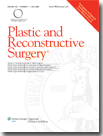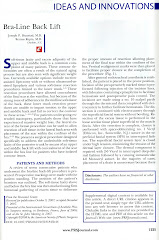Although I initially started this blog as a source of information for patients considering body contouring surgery I have received a fair number of inquiries regarding facial rejuvenation. Below is (almost) everything you ever wanted to know about facial rejuvenation. I hope you find it helpful.
Aging is a process that involves more than just an increase in loose skin. Here are the three main components of aging.
1) Atrophy/volume loss: The young face is full. As we age we lose volume. Most of this volume is lost as fat but also in bone and muscle. This is perhaps the biggest component of aging and it is ironically the part of aging that has only begun to be appreciated and properly corrected as part of facial rejuvenation in the last few years. Atrophy is the reason why overweight individuals tend to look younger longer--they have more facial volume.
2) Soft-tissue laxity: The tissue between our bone and our skin is our soft-tissue. This consists of muscle and connective tissue. With time, as gravity continues, this soft-tissue moves downward. Tissue that once was located in the lower cheek descends below the jawline and becomes jowls, eyebrows become closer to our upper eyelids, the neck develops laxity, and so on. Individuals who have gained and lost significant weight will have stretched this tissue more and often have increased soft-tissue laxity.
3) Skin aging: Our skin is our first line of protection from the environment. Sun exposure, pollution, and the remainder of the environment constantly bombards our skin. In response to this our skin fights back by repairing itself but over the years it accumulates the signs of aging. Fine lines, pigment changes, laxity, large pores all develop in response to environmental damage. The top layer of our skin (epidermis) get thicker, and the bottom layer of our skin (dermis) gets thinner. With time, the near constant movement of our facial muscles also results in wrinkles. These wrinkles such as those found between the eyebrows, in the forehead, and on the sides of our eyes are called dynamic wrinkles since they are largely the result of the movement of our facial muscles.
So how do we reverse facial aging?
There are a vast number of different ways that we can achieve a more youthful appearence. The best way to understand all of these treatments is to group them according to each of three aging factors listed above. In addition, each treatment can be identified as short term or long term, indicating the length that the results are expected to last. Over the last 10-15 years there has been an increasing emphasis on minimally invasive, low downtime, repeatable treatments. Although these type of treatments may be desirable for some patients, the longer lasting, more definitive treatments remain the gold standard and are in fact enjoying a resurgence in popularity.
1) Atrophy/volume loss:
Short term treatment: Fillers are the short term treatment for facial volume loss. Fillers are products that are created by companies that are injected into the face to increase volume. There are many types of fillers including and all of them have positives and negatives. The basic idea of any filler is that it is designed to be repeated anywhere from 6-24 months. They are not permanent. Visit the spa section of our website for a list of available
fillers .
Long term treatment: There are really only two long term (10+ years) or permanent treatment options for facial volume rejuvenation and those are facial implants and
fat grafting. Facial implants are really designed to improve the prominence of our facial skeleton. The most common type of implants are chin and cheek, but a whole variety of facial implant are available. These implants are solid and are designed to last a lifetime, although some patients choose to revise the size and shape of these implants as they age and their facial shape changes. Fat grafting involves placing small droplets of fat in areas where fat has diminished. It is obtained from areas of our bodies that we have excess fat and placed carefully and patiently in the areas of our face that would benefit from additional soft tissue volume including the cheeks, jaw line, lips, lower and upper eyelids, temples, earlobes, and occasionally even the nose. The fat that manages to establish blood supply will last forever, although additional volume loss is likely with continued aging.
2) Soft-tissue laxity:
Short term treatment: Most of the treatment options available for the short-term treatment of soft-tissue laxity involve trans-cutaneous delivery of energy. Currently the best technology for this is the
Ulthera system where ultrasound is used to deliver heat to the deep tissue below the skin. The results are not as powerful as surgery and are really only designed to last about a year.
Long term treatment: Long term treatment of soft-tissue laxity is largely confined to surgical procedures such as
face lift, neck lift, eye lid lift, and brow lift among others. These treatments involve surgery to gain access to the deep facial tissues where they are properly positioned. The recovery time and cost of the long term procedures are higher than the short term procedures as expected, but the results are longer lasting, more encompassing, and usually considered as the gold standard.
3) Skin Aging:
Short term treatment: There are many short term treatments for skin rejuvenation. In fact many of these constitute the "medical spa" type treatments that have become so well known. Among these include
Botox to relax skin wrinkles caused by facial muscle movement, light
chemical peels, laser, and microdermabrasion for light skin resurfacing,
IPL for skin color pigmentation, and a variety of skin care products to improve the texture and appearance of the skin. All of these treatments, especially when done in a medical spa environment, are designed to lightly improved skin aging. They are low to medium down time treatments that often have to be repeated once or twice to get maximum results. The longevity of the result often depends on how the skin is cared for.
Long term treatment: Most of the long term treatments for skin aging are just more aggressive versions of the short term treatments for this category. The deeper the skin is resurfaced via laser or chemical peel the better the result and the longer the results are likely to last given the same skin care. The downside is that these treatments usually require some form of sedation, additional cost, and longer recovery times.
Although facial aging and facial rejuvenation can be a complex and sometime daunting category of information it can be simplified by organizing the information as we have done above. Treatment of aging should also be considered in similar categories including short term and long term treatments as the cost, down time, quality of the results, and longevity of the results will be different.
Below is a quick two question survey regarding preference for short term vs long term facial rejuvenation treatments. Thanks.
All the best,
Phoenix/Scottsdale, AZ







